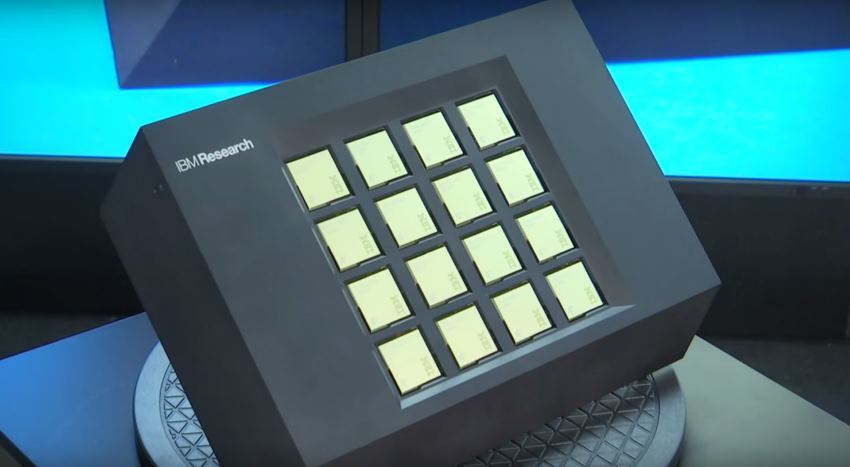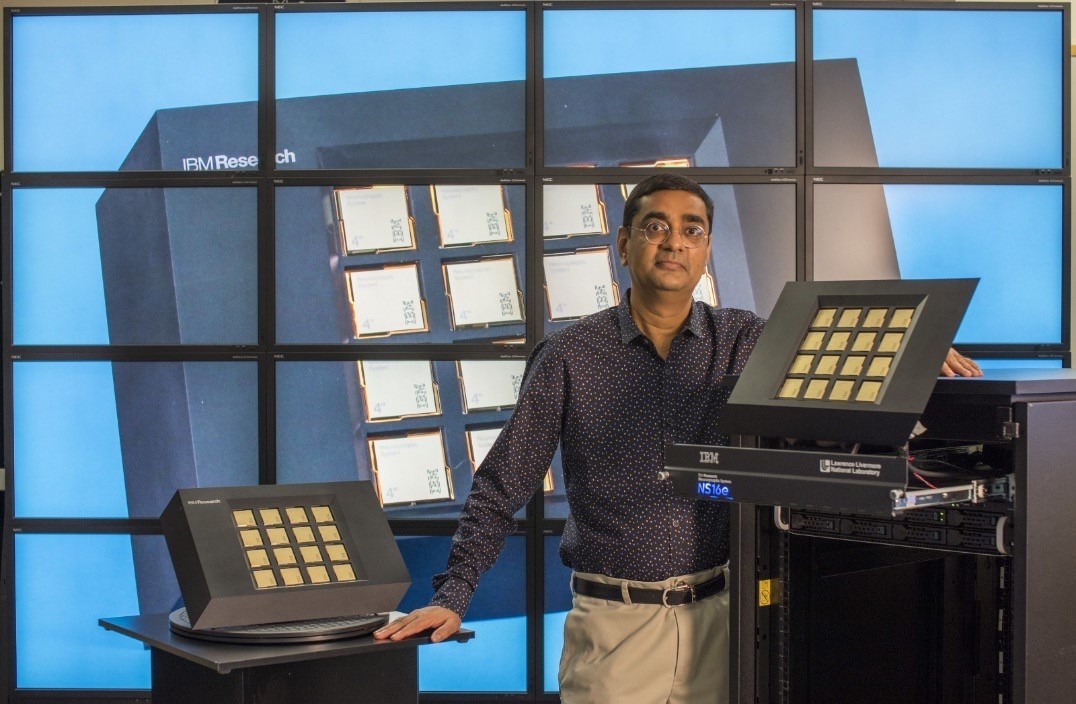A supercomputer based on a TrueNorth chip with a power consumption of 2.5 W was created in the USA

The Livermore National Laboratory (LLNL) recently announced the creation of a supercomputer, the principle of which is similar to the work of the human brain (to the extent that scientists understand the basics of the functioning of this body). The system is based on the TrueNorth chip, imitating a network of 16 million neurons with approximately 4 billion synapses. Of course, such a computer is still far from the human brain (after all, there are billions of neurons in humans), but this model is still one of the most powerful among all brain-like PCs ever created by man. The system is able to recognize images and solve various issues as people do.
The computer, created by the Livermore National Laboratory, has 16 TrueNorth chips installed. The system is called the IBM Neuromorphic System. It will be used to study the new capabilities of computing systems that may be useful to the National Nuclear Security Administration. Specialists will conduct a series of tests that will show the ability of the machine in relation to the study of the surrounding world, the use of in-depth analysis and self-study. The laboratory itself is "the main research and development organization for solving problems of national security." She is responsible for the "safety and reliability" of US nuclear weapons, using the achievements of modern science and technology in its development. The laboratory is also engaged in research in the field of non-defense science, such as energy, ecology and biology (including bioengineering).
“Neuromorphic computations open up quite impressive new possibilities, and, in general, this area is in line with our vision of the future of high-performance computer systems,” said Jim Brase, one of the project leaders. “The potential of neuromorphic computing and machine intelligence will help change the way we conduct research,” he continues.
The technology is qualitatively new, very different from the computer technologies that have dominated the market for the last 70 years. According to the project participants, based on TrueNorth, you can create systems 50 times more powerful than today's most powerful supercomputers. At the same time, such systems will consume a minimum amount of energy and occupy a small volume (here it is also appropriate to compare with the human brain).
')
“The low power consumption of such systems reflects the current needs of the computer industry and can significantly reduce the energy consumption of computers of the future,” says Michael McCoy, another research participant.
TrueNorth consumes much less energy and takes up less space than traditional computer systems. A separate TrueNorth chip, containing 5.4 billion transistors, consumes only 70 mW of power. And an Intel processor with 1.4 billion transistors consumes 35 to 140 watts. Future versions of TrueNorth can be significantly reduced to a size that allows such a system to be used in a smartphone or smart watch. TrueNorth chips have significant advantages over GPU and FPGA. IBM is hoping that TrueNorth will be the factor that will allow computer systems to enter a new stage of development. These technologies can be used not only to create smartphones or smart watches - neuromorphic chips can also be used in high-performance systems installed in data centers.
An interesting analogy is carried out by IBM specialists with the human brain. So, the corporation compares ordinary computer systems with the left hemisphere. Neuromorphic systems are able to find individual patterns in large data arrays and interpret this information as the right hemisphere of the brain. Perhaps in the near future, scientists will be able to combine the capabilities of traditional computers and neurofors chips, creating a single super-efficient structure.

Under the terms of the contract between the Laboratory and IBM, LLNL receives a 16-chip TrueNorth system with 16 million neurons and 4 billion synapses. Livermore National Laboratory also receives the entire necessary ecosystem for creating and managing energy efficient machines that are able to perceive information, learn and act like a human brain. The ecosystem includes a simulator, a programming language, an integrated software environment, a library of algorithms and applications, firmware, tools for building neural networks, a training course, and a cloud environment.
IBM has been working with DARPA to create neuromorphic chips (Systems of Neuromorphic Adaptive Plastic Scalable Electronics, SyNAPSE) for many years, the project began in 2008. The goal is to create chips and systems whose work would be organized according to the principle of the operation of animal brain neurons (for example, rodents). Not so long ago , the first results of this project were presented .
Source: https://habr.com/ru/post/280844/
All Articles